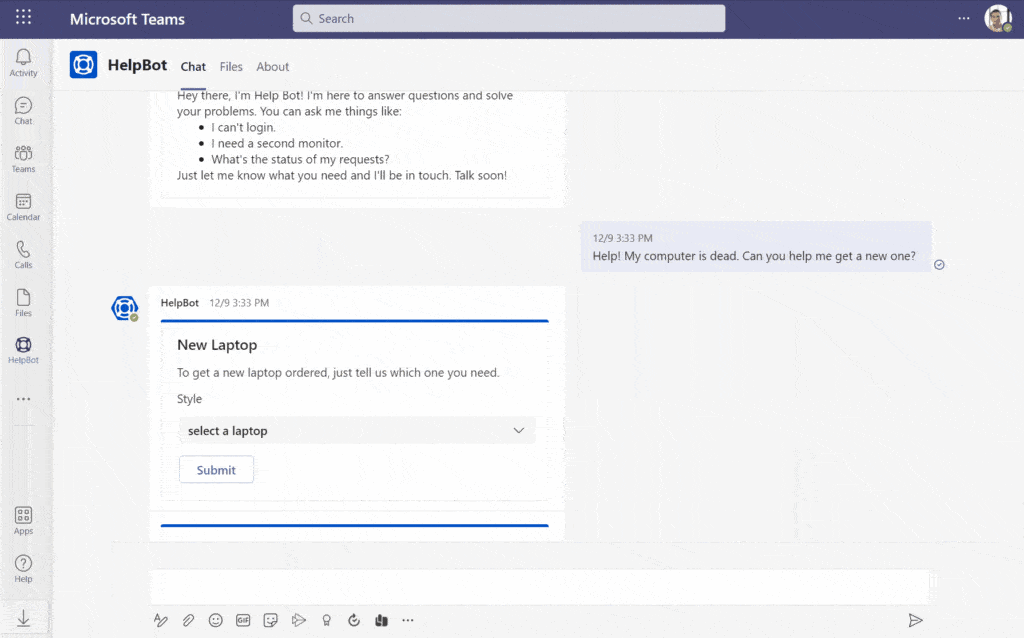Tikit Template Series Part 1: When and Why You Should Use Tikit Templates
Want to improve employee and analyst experience along with overall service desk efficiency? Tikit templates help you take a giant step forward in this direction, with less work to make it…work. Because behind the scenes, artificial intelligence is working on your behalf, reducing steps in the process.
Why Self-Service Isn’t the Solution It Appeared to Be
Artificial intelligence, as you likely know, makes it easier for employees not to rely on IT analysts or themselves to get help, because both situations can lead to dissatisfaction. Let’s face it: help desks can get bogged down with disjointed processes or technologies and repetitive questions, all of which consume analysts’ time.
Self-help seems like a good solution. It encourages independence on the part of employees, but how effective is it? Even if you have excellent, informative, easy-to-follow knowledge base instructions, do they represent real or repetitive questions employees are asking? Or do they reflect questions IT anticipates employees will ask? Also, how easy is it to find the right answer? It can feel like a shot in the dark, depending on the quality and searchability of your knowledge base.
Even if you have a solid process and informative knowledge base, will employees actually engage with it? Adoption is another hurdle. If you build it, they might come?
Templates—a proactive application of AI and new Tikit feature—puts choices directly in front of employees, so when they request a laptop, for example, the HelpBot virtual agent can respond with, “choose from this drop-down list of laptop options.”
It’s a more direct interaction between user and analyst (or a user and virtual agent). With more information being gathered during the initial interaction, analysts are able to save a lot of time on paperwork.
How Much Time Do Your Analysts Spend Gathering Information?
If you haven’t been tracking this data, now is a good time to start. The back-and-forth dialogue it takes to understand a problem, any context associated with its history and a users’ current setup could be costing potentially 20 – 30 hours per month. What is your data telling you?
On top of this, there could be a need for further research, including:
- Approved technologies for various internal departments?
- Procurement process / final approver for purchasing new tech?
- Permissions level for an employee?
What Is the Cost of Repetitive Requests?
Your data will give you an accurate picture of literal and figurative cost of repetitive requests. But in general, it takes a certain amount of time for questions to be posed and for the support team to respond, resolve and document requests.
Consider that questions are likely phrased a few different ways, but if the request is coming through, say, 25 times per month and it takes anywhere from 2 to 6 minutes to research, document and answer the request: one to two hours per month could be spent on one type of request alone.
How many repetitive requests do you receive each month?
What can be done about this? A different application of artificial intelligence.
What Are Tikit Templates and When Would You Use Them?
Tikit templates are pre-configured forms that help analysts gather relevant information when a request is made–before a ticket is created. Templates are available out-of-box. They can be customized or built from scratch, depending on your needs and preferences.
How might you use templates? Think through steps involved for analysts working through a repetitive request: what information would you need to know (or what are all the questions you would ask the user) to formulate a solution? What answers could they provide that will help you (help them)?

Templates help you serve up pre-determined questions related to common requests. So to use templates effectively, you might want to map out repetitive requests, corresponding pre-determined questions and potential answers. For example, for a “help, I need a new laptop,” request, what are the laptop manufacturer, version, style options your company issues. Is it the same for each department?
You can use this information to create a template that lists laptop options. When the request comes in, your analyst or (if you’ve automated the template) your HelpBot virtual agent can respond to the user request with the template. It might say, “To order a new laptop, tell us which one you need,” and it would include a drop-down menu of the laptop options you’ve defined.

If you’ve determined the cause and effect around problem, possible questions likely to be asked, information you need to further solve the issue, you have the content needed to create or customize a template.
This process can be applied to any request IT receives. Here are a few examples of requests you can create and apply templates to:
- I need a password reset or can’t log into [pick your application]
- I need access to [pick an application]
- I’m having trouble sending or receiving email
- I’m a new employee and need to be set up on [pick a platform, application, etc.]
Analysts can apply templates manually and via artificial intelligence to minimize human interaction and increase efficiency. Either way, there are multiple points of value the IT team and your entire organization can realize.
This was an introduction and overview of the concept behind Tikit templates. In part two, we cover: How to create and apply Tikit templates. Check out this guide, which breaks down Tikit’s functionality, backstory and the value of building a service desk in Teams: How Microsoft Teams Inspired Our Microsoft Teams Service Desk Solution. You can see how Tikit works in this demo. Or better yet, explore Tikit in a free 14-day fully-functional trial with no credit card needed!




